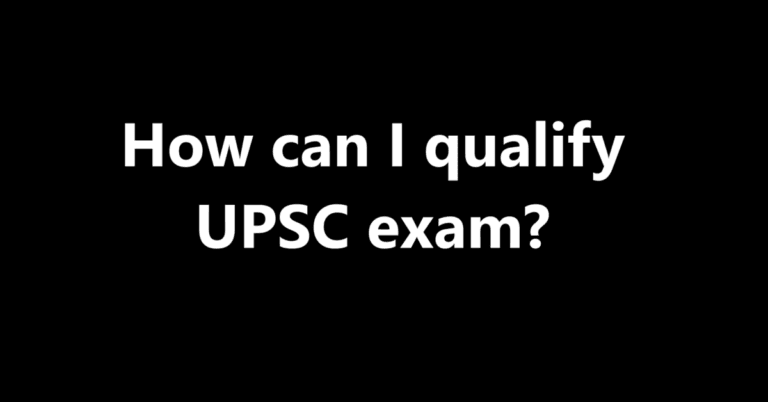Hello, dear puzzle enthusiasts! 🎉 Are you ready to dive into the world of word puzzles? Whether you’re a seasoned pro or a curious newcomer, this guide is packed with handy tips, proven strategies, and a sprinkle of enthusiasm to boost your puzzle-solving skills! So, grab your favorite cup of coffee or tea, find a comfy spot, and let’s explore the fascinating realm of word puzzles together!
What Are Word Puzzles?
First of all, let’s touch on what exactly word puzzles are! Imagine combining the thrill of a treasure hunt with the intellectual challenge of a riddle—yes, that’s the essence of word puzzles! From crosswords and anagrams to word searches, these mental gym workouts range from relaxing to brain-busting. They offer something for everyone. Word puzzles not only stimulate our minds but also enhance our vocabulary and cognitive skills. They transport us into a world of letters, words, and endless possibilities!
The Benefits of Tackling Word Puzzles
Before we delve into strategies, let’s take a moment to celebrate the incredible benefits that come from cracking word puzzles: they sharpen mental skills, enhance cognitive abilities, and provide a calming escape from daily stresses, offering a transformative boost to both mind and spirit.
- Boosts Vocabulary: Encountering new words encourages us to learn their meanings and use them in daily conversations.
- Enhances Cognitive Skills: Regularly engaging with puzzles sharpens our brain, improving memory, problem-solving skills, and overall mental agility.
- Stress Relief: Immersing ourselves in a puzzle gives us a chance to take a break from the hustle and bustle of everyday life, serving as a mini-retreat for our minds.
- Social Connection: Many of us enjoy solving puzzles in groups, whether with family at a dining table or through online platforms, fostering camaraderie and shared joy.
- Sense of Accomplishment: There’s no feeling quite like the thrill of completing a challenging puzzle—it’s a sweet taste of victory!
Warming Up: Types of Word Puzzles
Understanding the various types of word puzzles can help you approach them with the right set of strategies. Here’s a quick rundown of some popular varieties:
- Crossword Puzzles: Clues lead you to fill in intersecting words on a grid. It’s all about lateral thinking!
- Anagrams: Rearranging the letters of a word or phrase to form new ones. For example, “listen” can become “silent.”
- Word Searches: Finding hidden words in a grid filled with letters. The words can be arranged in any direction!
- Cryptograms: These are encoded messages that require shifting letters to reveal the original text.
- Letter Jumbles: Unscrambling a set of letters to form a valid word.
Now that you have a clear idea of the different types of word puzzles, you’re ready to leverage effective tactics tailored to each kind. Let’s dig into the strategies that will help you conquer them with confidence!
Essential Strategies for Solving Word Puzzles
1. Start with What You Know
When staring at a crossword or any word puzzle, begin with the clues you feel confident about. Fill in the answers you can deduce easily. Getting a few words down will help you visualize how the rest of the puzzle should take shape—your puzzle-solving momentum will begin to build!
2. Sift Through the Clues
Read all the clues carefully. For crosswords, pay attention to hints about abbreviations, phrases, or wordplay. Sometimes, the clue might have a silly twist that makes you scratch your head with laughter! Utilize contextual clues and think outside the box.
3. Chunk It Up!
For word searches, focus on finding smaller sections or clusters of letters. Circle the words you find in the order they appear; this can help you keep track of what’s been discovered and make the remaining letters less daunting.
4. Practice Anagram Recognition
For anagrams, look for common prefixes or suffixes. Familiarize yourself with letter combinations that frequently appear together, such as “th,” “ch,” or “ing.” Consider creating a dedicated practice space at home where you can test your anagramming skills with some word scrambles!
5. Use Elimination
In cryptograms, if you know a particular letter or word is repeated, it may correspond to common words like “the,” “and,” or “is.” Start with those! Cross-referencing letters can help to unlock the mystery faster than you might think.
6. Visualize and Map It Out
Consider drawing diagrams to visualize letter placements. While this sounds a bit “extra,” mapping out complex puzzles can lead to unexpected breakthroughs. Use colored pens to keep things organized—who knew solving could be a creative activity too?
7. Leverage Online Resources
Don’t shy away from technology! There are countless websites, apps, and forums dedicated to helping puzzle enthusiasts. Use them as a learning tool but remember to focus on solving progressively so your skills can grow!
8. Practice, Practice, Practice!
Like anything else in life, practice is the golden key! Dedicate some time each day or week to tackle your favorite puzzles—watch yourself transform into a word wizard! As your familiarity grows, you’ll notice that you begin to solve puzzles much faster.
9. Connect with the Community
Word puzzle communities exist everywhere! Join hobbyist groups on social media, or check online forums. Not only will you get insights and tips, but you may even find a team to collaborate with on challenging puzzles.
Understanding the Puzzle
The first step in solving any word puzzle is to thoroughly understand the given clues and the structure of the puzzle. Let’s break down the components:
- Clues Provided: Typically, word puzzles come with a set of clues that hint at the words to be filled in. These clues can be definitions, synonyms, antonyms, or even more cryptic indicators.
- Grid Layout: If it’s a crossword or a similar puzzle, there’s a grid where the words intersect. Understanding the grid’s dimensions and the placement of black squares (in crosswords) is crucial.
- Word Lengths: Each clue usually indicates the length of the word required, either directly or through the grid’s structure.
Gathering Necessary Tools
Before diving in, it’s helpful to gather tools that can aid in solving the puzzle:
- Dictionary and Thesaurus: For looking up definitions and finding synonyms.
- Pencil and Eraser: To make notes and corrections easily.
- Online Resources: Websites dedicated to word puzzles can offer hints or confirm solutions.
Starting with the Easiest Clues
A common strategy is to begin with the clues that seem the simplest or most straightforward. Solving these can provide letters that intersect with more challenging words, offering a foothold.
- Identify Easy Clues: Look for clues that are direct definitions or have obvious answers.
- Fill in the Grid: Enter these answers into the grid, paying attention to how they intersect with other words.
Tackling More Challenging Clues
Once the easier clues are solved, move on to the more difficult ones. Here’s how to approach them:
- Analyze the Clue: Break down the clue into its components. Look for wordplay, puns, or hidden meanings.
- Consider Multiple Meanings: Many clues rely on words with double meanings or alternative interpretations.
- Use Crossword-solving Techniques: Techniques like looking for common prefixes or suffixes, considering pluralization, or thinking of homophones can be beneficial.
Utilizing Cross-Referencing
As you fill in more words, use the intersecting letters to help solve adjacent clues:
- Look for Common Letters: Identify letters that appear in multiple words and use them to narrow down possibilities.
- Verify Tentative Answers: Ensure that the words you’re considering fit both the clue and the intersecting letters.
Managing Uncertainty and Mistakes
It’s natural to encounter uncertainty or make mistakes while solving:
- Stay Flexible: Be willing to erase and reconsider answers if they don’t fit well.
- Take Breaks: Sometimes stepping away from the puzzle can provide a fresh perspective upon returning.
- Seek Help if Needed: Don’t hesitate to use hints or look up answers if you’re stuck, especially when learning.
Practicing Regularly
Improvement comes with practice. Regularly engaging with word puzzles can enhance vocabulary, pattern recognition, and problem-solving skills.
- Start with Simpler Puzzles: Gradually work your way up to more complex puzzles as your skills improve.
- Diversify Puzzle Types: Try different types of word puzzles to challenge various aspects of language and logic.
Finalizing the Solution
Once all clues are addressed, review the entire puzzle:
- Check for Consistency: Ensure all words fit both their clues and the intersecting letters.
- Verify Spelling: Double-check for any spelling errors that might have slipped in.
- Celebrate Completion: Take a moment to appreciate the effort and learning that went into solving the puzzle.
Example Scenario
Let’s apply these steps to a hypothetical crossword puzzle:
Clue 1: “A large body of water (4 letters)”
- Analysis: The clue is a straightforward definition.
- Possible Answer: “Lake”
Clue 2: “Opposite of ‘stop’ (3 letters)”
- Analysis: Looking for an antonym.
- Possible Answer: “Go”
Clue 3: “Feeling of great happiness (3 letters)”
- Analysis: Definition of an emotion.
- Possible Answer: “Joy”
By filling in these answers, we start to see intersecting letters that can help solve adjacent clues, gradually completing the puzzle.
Engaging Yourself in the Puzzling Adventure!
So, are you ready to plunge into the mesmerising world of word puzzles? Remember, solving puzzles is not about rushing to the finish line. Enjoy the process and cultivate a sense of curiosity! Have fun, share your experiences, and don’t forget to celebrate your victories, big or small.
Final Thoughts
Word puzzles are more than just a pastime; they’re a delightful way to sharpen your mind, expand your vocabulary, and connect with others! Dive into this challenging yet rewarding hobby, and before you know it, you’ll be solving puzzles with flair!
So go ahead, grab your favorite puzzle book or jump online to find some new challenges waiting just for you. Here’s to solving those word puzzles like a pro—happy puzzling! 🧩✨



